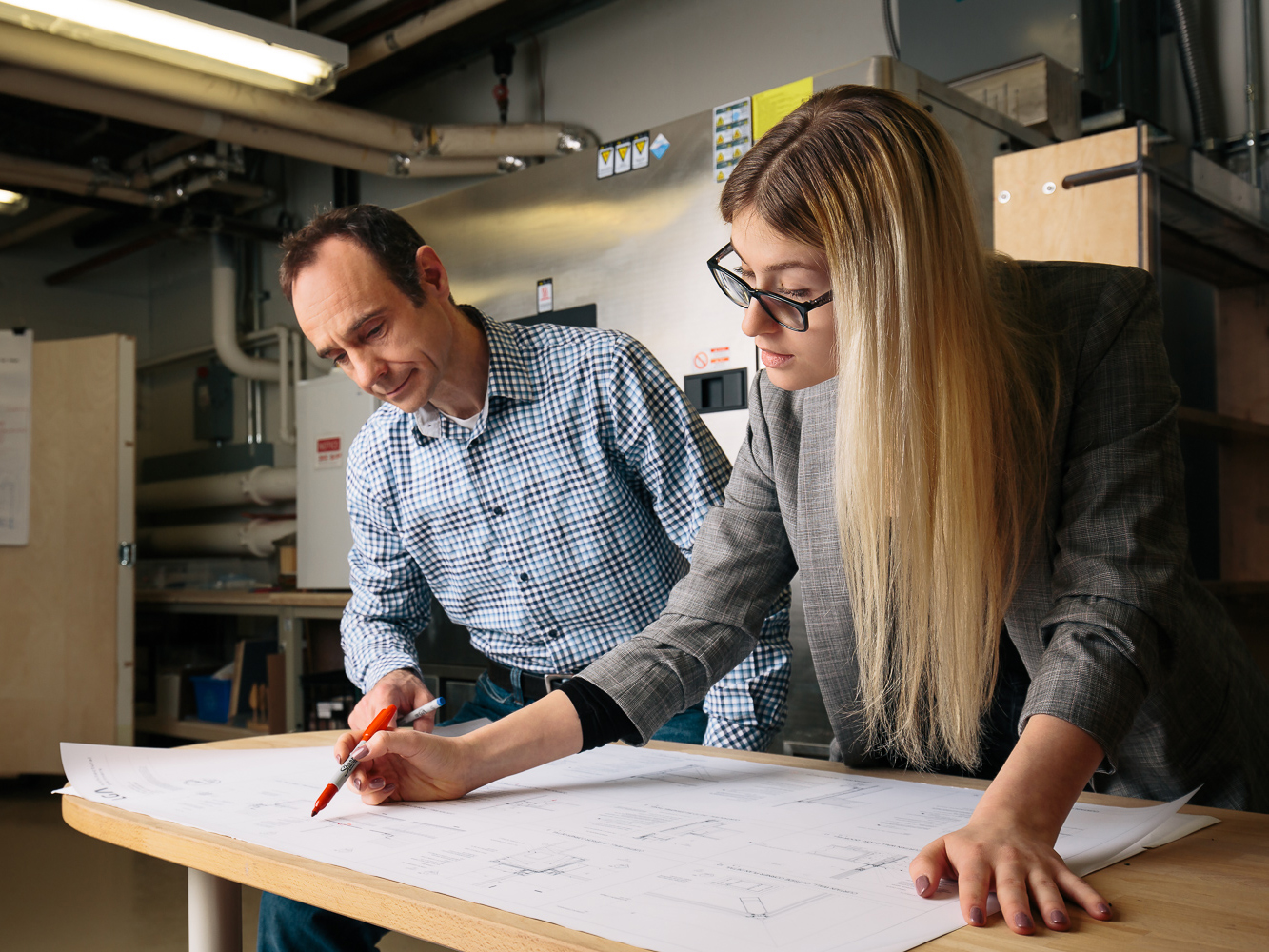Building Science Masters Student, Jelena Madzarevic Wins OBEC scholarship

Toronto Met’s Building Science Masters student, Jelena Madzarevic has been awarded the Graduate Student Scholarship (external link) awarded by the Ontario Building Envelope Council (OBEC) (external link) . Greg Labbe, DAS’s Building Science Research Lab technician, speaks of his experience working with Jelena:
“On a technical side, I love the fact that she married her chemistry background with Building Science, specifically working with volatile refrigerants. She had to develop techniques for sample prep and move quickly as her samples volatilised. She was also a bridge builder, able to knit social bonds between seemingly disparate groups and I love the fact that she reached out to both the chemistry department and the microscopy lab to work on her samples. It's the kind of interdisciplinary move that makes Toronto Met shine and I wish there was more of that kind of collaboration in research. Jelena never says no to an opportunity, even when her plate is full. She’s a team player and OBEC chose a great candidate. Congratulations Jelena!”
We wanted to take this opportunity to find out about her experience at Toronto Met, working with various faculty, collaborating with other departments and advice she has for future students thinking of pursuing a Master's degree in Building Science here at the Department of Architectural Science.
Tell us about your academic path. How did you end up as a Masters student in Building Science at Toronto Met?
I completed an undergraduate degree at Toronto Met in Chemistry. During my undergraduate degree, I worked at a consulting engineering firm which exposed me to the world of building design. I really enjoyed the work I was doing but knew I needed more education to work in the industry full time, which is why I pursued the Master’s program. I chose Toronto Met specifically because they offered a Master’s in Building Science which is a really unique program. Building Science was the most interesting topic to me and also, made use of my background in science. I was also excited to spend more time at Toronto Met because of the great experience I had during undergrad. Since I started at Toronto Met in 2012, I had front row seats to the tremendous growth the university has experienced.
Why Building Science?
The most interesting part of the building science program was the interdisciplinary curriculum. It was both challenging and exciting, with exposure to topics that ranged from theory, envelope systems, energy, and acoustics. Focusing on insulating foam materials, I was curious about how spray and insulating materials would look like close up, how much blowing agent concentration was inside, and how that changed after accelerated aging. I used scanning electron microscopy (SEM) and gas chromatography (GC) to explore these aspects.
Tell us about your thesis.
I was interested in what spray and rigid board foam insulations looked like close up, how much blowing agent concentration was inside, and how that changed after accelerated aging. I used scanning electron microscopy (SEM) and gas chromatography (GC) to explore these aspects. Building science may give the impression of looking at problems from the scale of a building, but really, a lot of the research done focuses on individual components and physical phenomena. What I was hoping to accomplish with my research was the value between the micro aspects of a material, and how that affects its performance on the building scale. SEM and GC are methods would be really valuable in understanding material behavior that would greatly benefit the development of new products or investigation of the failures of current ones.
Do you have advice for students thinking about entering the Building Science Program at Toronto Met?
My advice is to be curious and open to all aspects of the built environment. The program gives you the exposure and the opportunity to explore many areas of building science and one should be ready for that! I’ve been given chances to work on cool projects in the community, like the North York Women’s Shelter (external link) , that enhances classroom learning with real world experience in the built environment. It is challenging, but it provides a more cohesive understanding of the industry that you will be entering, and the interrelationships that exist. So, take all the opportunities that the Program provides, to make your educational experience about more than just the classroom or studio.